
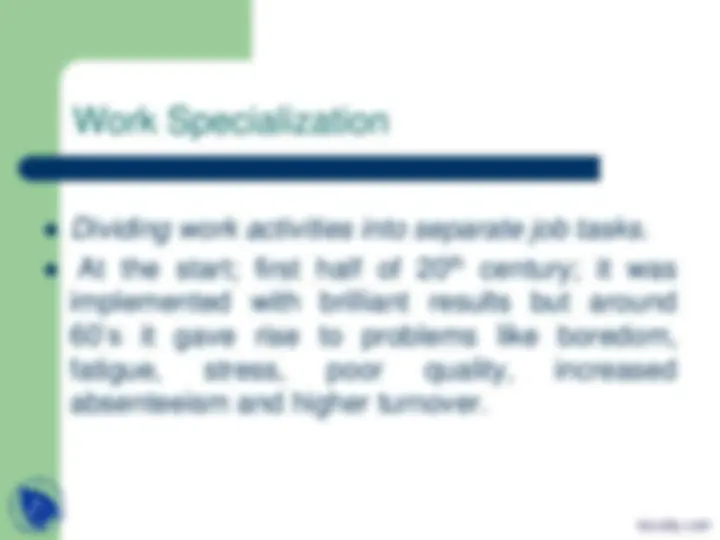
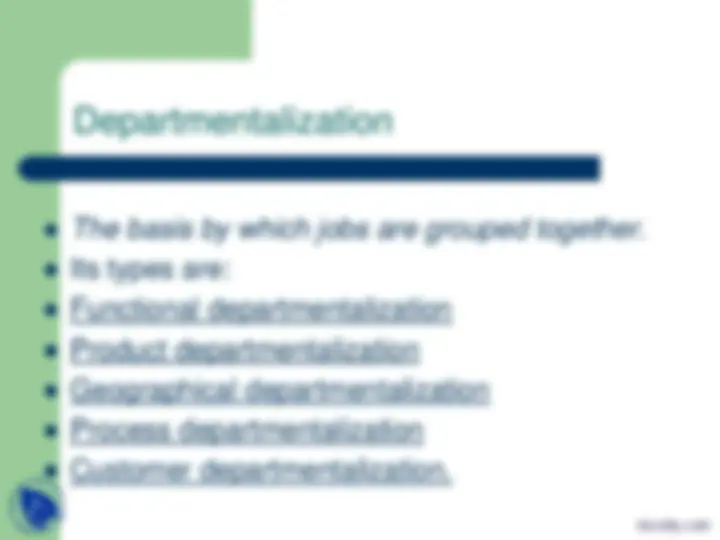
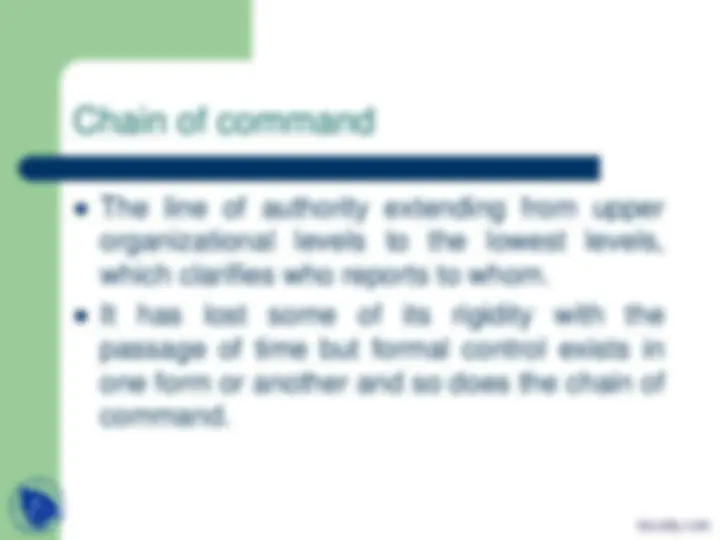
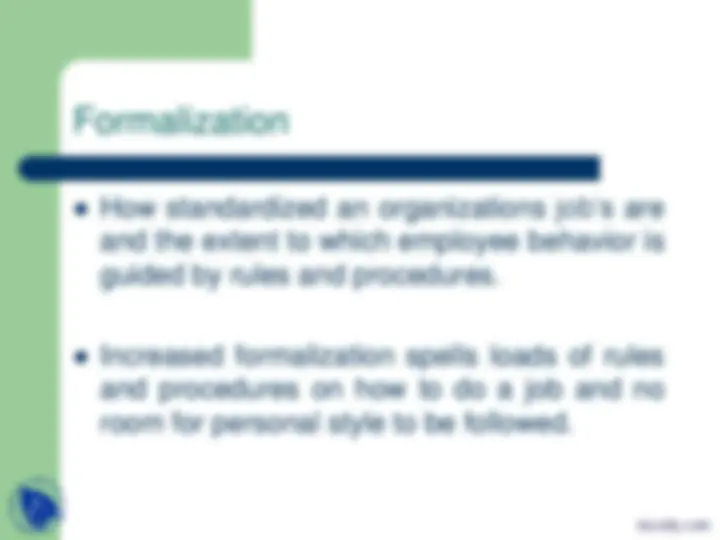
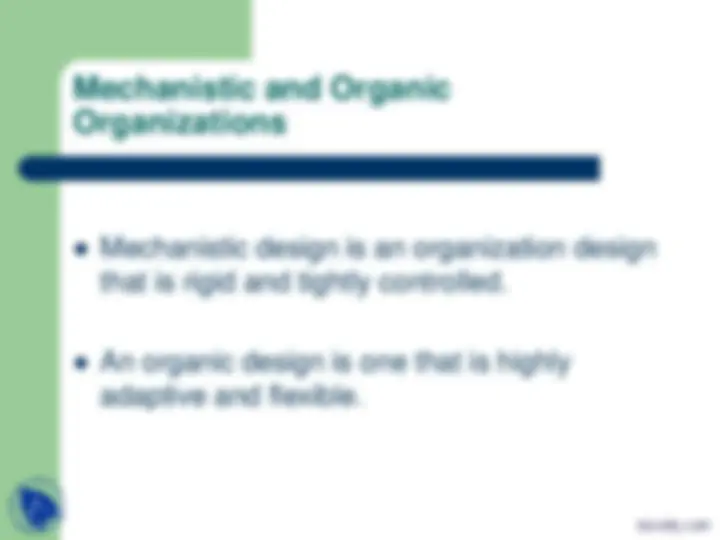
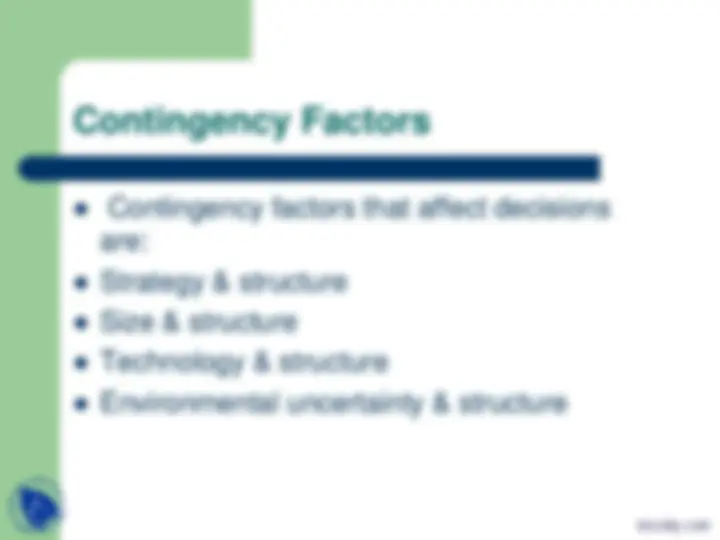
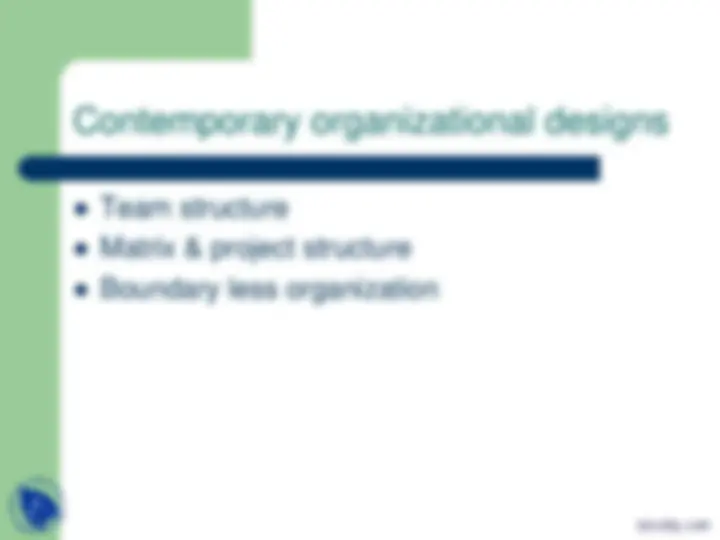



Study with the several resources on Docsity

Earn points by helping other students or get them with a premium plan


Prepare for your exams
Study with the several resources on Docsity

Earn points to download
Earn points by helping other students or get them with a premium plan
Community
Ask the community for help and clear up your study doubts
Discover the best universities in your country according to Docsity users
Free resources
Download our free guides on studying techniques, anxiety management strategies, and thesis advice from Docsity tutors
This is project presentation for Management Practices course at Dayalbagh Educational Institute. It includes: Organiztional, Structure, Design, Arrangement, Jobs, Departmentalization, Chain, COmmand, Centralization
Typology: Slides
1 / 14

This page cannot be seen from the preview
Don't miss anything!









It’s a formal arrangement of jobs within an organization.
When it is modified or altered in any way; it is termed as organizational design.
Design consists of decision making regarding the following, specialization, departmentalization, chain of command, span of control, centralization and decentralization and formalization.
The basis by which jobs are grouped together.
Its types are:
Functional departmentalization
Product departmentalization
Geographical departmentalization
Process departmentalization
Customer departmentalization.
The line of authority extending from upper organizational levels to the lowest levels, which clarifies who reports to whom.
It has lost some of its rigidity with the passage of time but formal control exists in one form or another and so does the chain of command.
Centralization is the degree to which decision making is concentrated at upper levels of organization.
Decentralization is the degree to which lower level employees provide input or actually make decisions.
How standardized an organizations job’s are and the extent to which employee behavior is guided by rules and procedures.
Increased formalization spells loads of rules and procedures on how to do a job and no room for personal style to be followed.
Contingency factors that affect decisions are:
Strategy & structure
Size & structure
Technology & structure
Environmental uncertainty & structure
It has two basic types:
Traditional organizational designs
Contemporary organizational designs
Team structure
Matrix & project structure
Boundary less organization
Keeping employees connected
Building a learning organization
Managing global structural issues